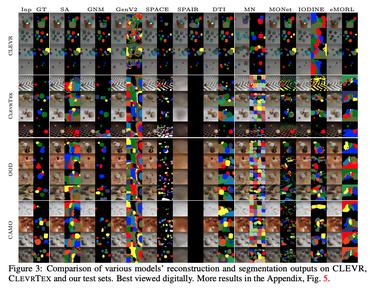Self-supervised Video Object Segmentation by Motion Grouping
Animals have evolved highly functional visual systems to understand motion, assisting perception even under complex environments. In this paper, we work towards developing a computer vision system able to segment objects by exploiting motion cues, i.e. motion segmentation. We make the following contributions: First, we introduce a simple variant of the Transformer to segment optical flow frames into primary objects and the background. Second, we train the architecture in a self-supervised manner, i.e. without using any manual annotations. Third, we analyze several critical components of our method and conduct thorough ablation studies to validate their necessity. Fourth, we evaluate the proposed architecture on public benchmarks (DAVIS2016, SegTrackv2, and FBMS59). Despite using only optical flow as input, our approach achieves superior or comparable results to previous state-of-the-art self-supervised methods, while being an order of magnitude faster. We additionally evaluate on a challenging camouflage dataset (MoCA), significantly outperforming the other self-supervised approaches, and comparing favourably to the top supervised approach, highlighting the importance of motion cues, and the potential bias towards visual appearance in existing video segmentation models.
PDF Abstract ICCV 2021 PDF ICCV 2021 Abstract






 DAVIS
DAVIS
 CLEVR
CLEVR
 DAVIS 2016
DAVIS 2016
 FBMS
FBMS
 SegTrack-v2
SegTrack-v2
